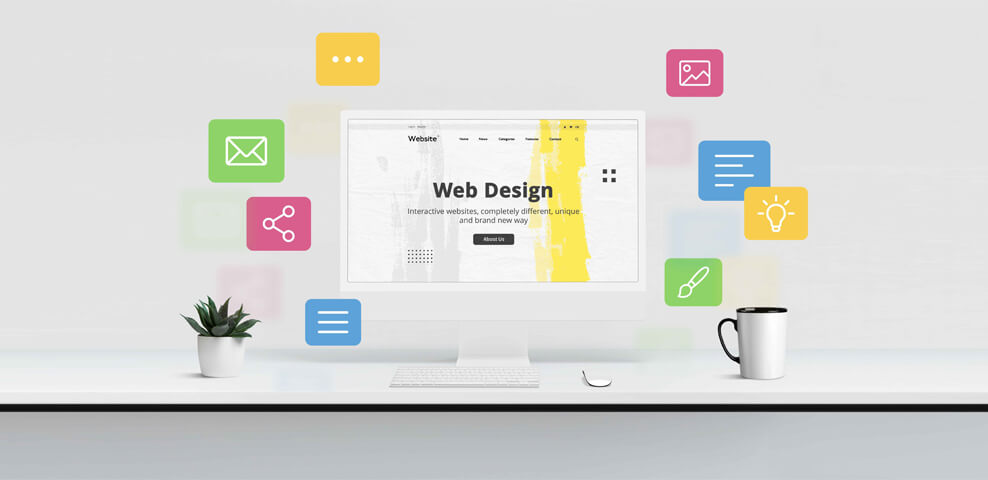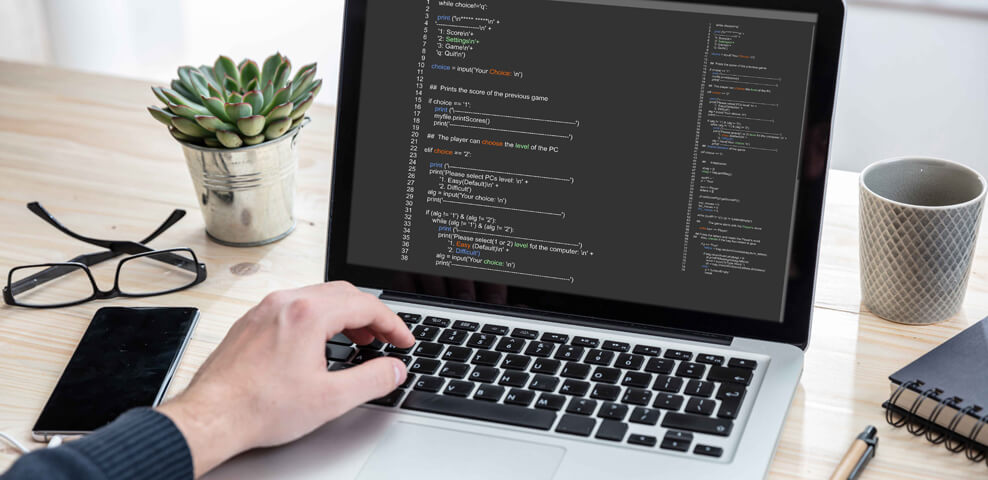“Design is not just what it looks like and feels like. Design is how it works.” — Steve Jobs
When it comes to decision-making in web design, two essential factors often stand at the forefront: aesthetics and functionality. The delicate balance between aesthetics vs. functionality in web design can make or break a website’s success.

Striking the right balance is crucial for creating an engaging user experience that not only captivates visitors with its visual appeal, but also ensures seamless functionality.
Let’s delve into how designers navigate this intricate path.
Finding Harmony: Aesthetics vs. Functionality in Web Design
Web Design Aesthetics: Creating Visually Appealing Websites
1. First Impressions Matter
The visual appeal of a website is the first thing visitors encounter. A clean, attractive design can immediately grab attention and pique interest.
2. Aesthetics and Brand Identity
A website’s design should reflect the brand’s personality, values, and vision. Consistency in colour schemes, typography, and imagery helps reinforce brand identity.
3. Design Elements and User Satisfaction
Thoughtful use of design elements, such as intuitive navigation, pleasing colour palettes, and visually appealing imagery, contributes to a positive user experience.
4. User Interaction and Aesthetics
Engaging interactions, such as smooth animations or interactive elements, not only enhance aesthetics, but also make the user experience more enjoyable and memorable.
Website Functionality: Facilitating Seamless User Experience
1. Usability and Aesthetics
A visually stunning website is of little use if it’s not user-friendly. Intuitive navigation, clear calls to action, and easy access to information are paramount for usability.
2. Responsive Design for Accessibility
Functionality extends to responsiveness across various devices. A mobile-friendly design ensures that users have a seamless experience regardless of the device they’re using.
3. Loading Speed and User Engagement
Aesthetics lose their charm if a website takes too long to load. Fast-loading pages keep users engaged and prevent them from bouncing off.
4. A/B Testing for Design Decisions
Implementing A/B testing allows designers to evaluate different design approaches for both aesthetics and functionality. This data-driven approach helps in making informed decisions.

Design Principles for Websites
1. Balance
- Achieving equilibrium between aesthetics and functionality is paramount.
- Neither should overpower the other; they should work in tandem to create a harmonious user experience.
2. Consistency
- Consistency in design elements, such as fonts, colours, and navigation, fosters familiarity.
- This predictability enhances user confidence and comfort while navigating the site.
3. Accessibility
- Functionality encompasses accessibility. Designers must ensure that the website is usable for all, including those with disabilities.
- This not only aligns with ethical standards but also widens the audience reach.
4. Simplicity
- Simplicity is the ultimate sophistication. A clutter-free design not only looks pleasing, but also facilitates easy navigation.
- This ensures visitors can find what they’re looking for effortlessly.
How to Achieve the Perfect Balance?
- Creating a website that seamlessly blends aesthetics and functionality requires a thoughtful approach.
- It demands a deep understanding of the brand, its audience, and their needs.
- It necessitates constant iteration and refinement, often guided by data-driven insights.
- Remember, a website’s success isn’t solely defined by its visual allure or its flawless functionality—it’s the marriage of both that truly captivates and converts visitors.
For expert guidance in achieving the perfect balance of aesthetics and functionality in your web design, turn to IKF, a leading web design agency in India.
With a track record of crafting stunning, user-friendly websites, IKF brings a wealth of experience to every project. Contact us today to make your online presence soar new heights!
FAQs
1. How do you balance aesthetics and functionality in your designs?
Balancing aesthetics and functionality in design involves prioritising user experience. It requires thoughtful consideration of visual elements to create an engaging interface, while ensuring that every design choice serves a practical purpose, enhancing usability and accessibility for the audience.
2. What is the difference between aesthetics and functionality in design?
Aesthetics in design focus on the visual appeal and artistic elements, aiming to create a visually pleasing and engaging experience for users. On the other hand, functionality pertains to the practical aspects, ensuring that the design serves its intended purpose effectively, with seamless navigation, clear usability, and optimal performance.
3. What is more important, aesthetics or functionality?
Neither aesthetics nor functionality takes precedence over the other; both are equally vital in design. A harmonious balance between aesthetics and functionality ensures a compelling user experience, where visual appeal complements practical usability, ultimately leading to a successful and engaging design.

Ashish Dalia is the CEO & Chief Digital Marketing Strategist at I Knowledge Factory Pvt. Ltd.

Ashish Dalia is the CEO & Chief Digital Marketing Strategist at I Knowledge Factory Pvt. Ltd.











